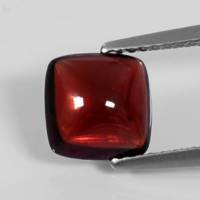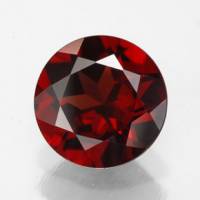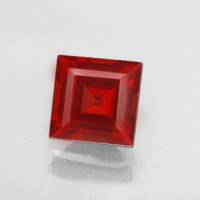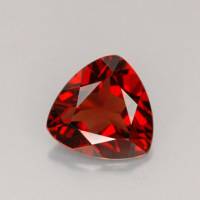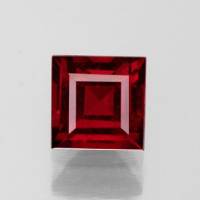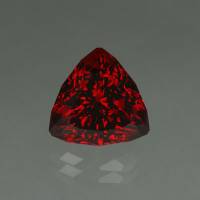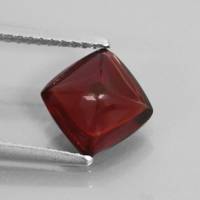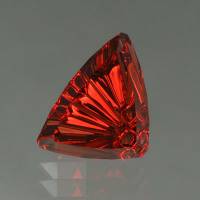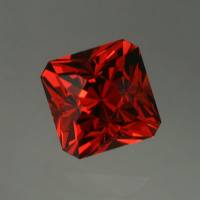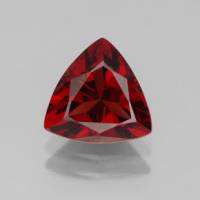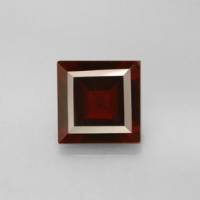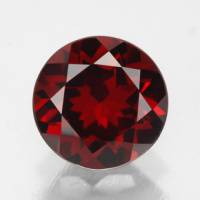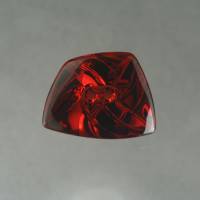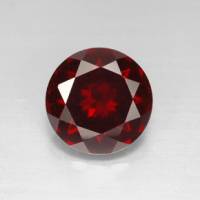Pyrope
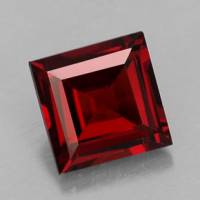
Mozambique
1.42 carats
© gemselect.com
Pyrope Gemstones by Colour
This table shows the variety of hues this gemstone can be found in. Click on a photo for more information.
Pyrope Gemstones by Size
This table shows distribution of Pyrope gemstone sizes that are listed on this site. This can give a good indication as to the general availability of this gemstone in different sizes.
Contributed photos
Lightest:0.26 cts
Heaviest:10.52 cts
Average:2.77 cts
Total photos:32
Do you have a larger Pyrope? Why not upload a photo?
| General Information | |||||||||||||||||||||||||||||||||||||||||||||||||||||||||||
|---|---|---|---|---|---|---|---|---|---|---|---|---|---|---|---|---|---|---|---|---|---|---|---|---|---|---|---|---|---|---|---|---|---|---|---|---|---|---|---|---|---|---|---|---|---|---|---|---|---|---|---|---|---|---|---|---|---|---|---|
| A variety or type of: | Garnet Group | ||||||||||||||||||||||||||||||||||||||||||||||||||||||||||
| Varieties/Types: | Chrome Pyrope - A violet chrome-bearing variety of pyrope. | ||||||||||||||||||||||||||||||||||||||||||||||||||||||||||
| Chemical Formula |
| ||||||||||||||||||||||||||||||||||||||||||||||||||||||||||
| Pyrope Simulants | |||||||||||||||||||||||||||||||||||||||||||||||||||||||||||
| Imitations are made with red glass. - Gemstones of the world, Walter Schumann, 2001, p 104 | |||||||||||||||||||||||||||||||||||||||||||||||||||||||||||
| Physical Properties of Pyrope | |||||||||||||||||||||||||||||||||||||||||||||||||||||||||||
| Mohs Hardness | 7 to 7.5, Blue Chart Gem Identification (2010) More from other references | ||||||||||||||||||||||||||||||||||||||||||||||||||||||||||
| Specific Gravity | 3.62 to 3.87, Gemstones of the world (2001) More from other references | ||||||||||||||||||||||||||||||||||||||||||||||||||||||||||
| Tenacity | Brittle, Handbook of mineralogy (2001) | ||||||||||||||||||||||||||||||||||||||||||||||||||||||||||
| Cleavage Quality | Indistinct, Gemstones of the world (2001) More from other references | ||||||||||||||||||||||||||||||||||||||||||||||||||||||||||
| Fracture | Conchoidal, Gemstones (2009) | ||||||||||||||||||||||||||||||||||||||||||||||||||||||||||
| Optical Properties of Pyrope | |||||||||||||||||||||||||||||||||||||||||||||||||||||||||||
| Refractive Index | 1.720 to 1.756, Gemstones of the world (2001) More from other references | ||||||||||||||||||||||||||||||||||||||||||||||||||||||||||
| Optical Character | Isotropic, Blue Chart Gem Identification (2010) Anomalous double refractionMore from other references | ||||||||||||||||||||||||||||||||||||||||||||||||||||||||||
| Pleochroism | Absent, Gemstones of the world (2001) | ||||||||||||||||||||||||||||||||||||||||||||||||||||||||||
| Dispersion | 0.022, Gemstones (2009) | ||||||||||||||||||||||||||||||||||||||||||||||||||||||||||
| Colour | |||||||||||||||||||||||||||||||||||||||||||||||||||||||||||
| Colour (General) | Red, brownish-red, Gemmological Tables (2004) Colour change: violet/redMore from other references | ||||||||||||||||||||||||||||||||||||||||||||||||||||||||||
| Causes of Colour | Brownish-red, Fe2+ in distorted cubic coordination. Red, Fe2+ in distorted cubic site plus Cr3+ in octahedral coordination. Color change (in pyrope and pyrope-spessartine), V3+ and/or Cr3+ in octahedral coordination, Pragmatic Spectroscopy For Gemologists (2011) | ||||||||||||||||||||||||||||||||||||||||||||||||||||||||||
| Transparency | Transparent, Gemmological Tables (2004) More from other references | ||||||||||||||||||||||||||||||||||||||||||||||||||||||||||
| Lustre | Vitreous, Gemstones (2009) | ||||||||||||||||||||||||||||||||||||||||||||||||||||||||||
| Fluorescence & other light emissions | |||||||||||||||||||||||||||||||||||||||||||||||||||||||||||
| Fluorescence (General) | Mostly none, Gemstones of the world (2001) | ||||||||||||||||||||||||||||||||||||||||||||||||||||||||||
| Crystallography of Pyrope | |||||||||||||||||||||||||||||||||||||||||||||||||||||||||||
| Crystal System | Isometric, Blue Chart Gem Identification (2010) More from other references | ||||||||||||||||||||||||||||||||||||||||||||||||||||||||||
| Habit | Rare in crystal form, Gemstones (2009) More from other references | ||||||||||||||||||||||||||||||||||||||||||||||||||||||||||
| Geological Environment | |||||||||||||||||||||||||||||||||||||||||||||||||||||||||||
| Where found: | In ultramafic rocks, as peridotites, kimberlites, eclogites, serpentinites, and in "hornblende"-garnet-plagioclase rocks and anorthosites. Also in amphibole and biotite schists, and as a detrital mineral., Handbook of mineralogy (2001) | ||||||||||||||||||||||||||||||||||||||||||||||||||||||||||
| Inclusions in Pyrope | |||||||||||||||||||||||||||||||||||||||||||||||||||||||||||
| Low-relief rounded crystals (such as apatite and zircon), acicular crystals - Blue Chart Gem Identification, Herve Nicolas Lazzarelli, 2010, p 3 | |||||||||||||||||||||||||||||||||||||||||||||||||||||||||||
| Further Information | |||||||||||||||||||||||||||||||||||||||||||||||||||||||||||
| Mineral information: | Pyrope information at mindat.org | ||||||||||||||||||||||||||||||||||||||||||||||||||||||||||
| Significant Gem Localities | |||||||||||||||||||||||||||||||||||||||||||||||||||||||||||
| |||||||||||||||||||||||||||||||||||||||||||||||||||||||||||

